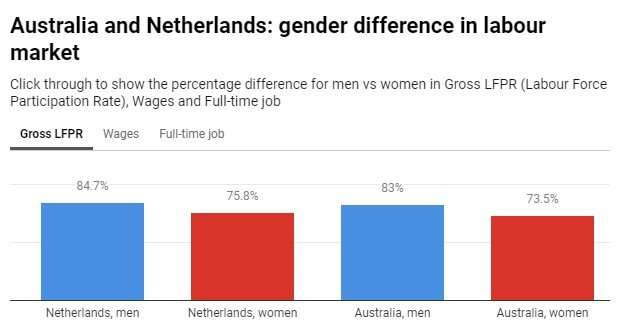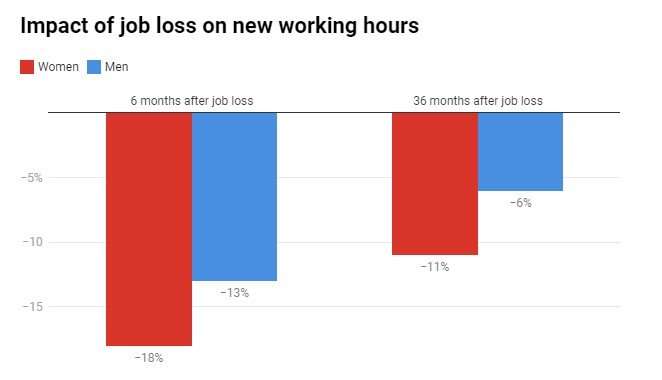Flexible work arrangements help women, but only if they are also offered to men

Flexible workplace policies designed to improve gender gaps in employment and pay might actually make things worse for women.
Flexible work has been on offer to both men and women in many companies for decades. However, it is usually women who are in non-standard employment such as part-time work, often to meet the demands of children, sick parents or partners needing extra care.
Flexible arrangements might support women in maintaining a work-life balance. But policies that make it easier to transition to a part-time job or take leave may actually be weakening their position in the labor market and their lifetime earnings potential, therefore widening gender gaps in pay.
This highlights the need for equal policies for women and men.
COVID-19 and the labor market
The world changed under COVID-19 and the movement towards more flexible work may be one of the silver linings of the pandemic.
This International Women's Day (March 8), we are in a unique position to tap into the learnings from the COVID-19 lockdowns, during which many men and women were working from home and sharing housework, home-schooling and childcare responsibilities.
Research shows Australian fathers stepped into more involved roles in the household during the lockdowns and have maintained higher levels of involvement in housework and childcare as things return to normal.

Job flexibility and gender pay gap
New research from the Melbourne Institute suggests flexible work conditions such as part-time hours could be a driving factor in the career decisions of women, but not men, and a key reason why the gender divide in employment is not narrowing.
Gender differences in labor force participation, wages and working hours in Australia are very similar to those in the Netherlands, so a study from there offers valuable insights for policymakers in Australia.
Researchers (including one of us, Jordy Meekes) used data from Statistics Netherlands to analyze how men and women respond to job loss.
The study found women remained unemployed for longer than men. When they did find new jobs, women also experienced a larger reduction in working hours than men, which reduced their annual earnings.
It appears women tend to put more emphasis on job flexibility than men, an explanation for why it is hard for women to return to the workforce. Women may even be willing to pass up job opportunities in favor of the flexible work conditions they rely on to balance work and family life.
Women remain largely responsible for the organizational and physical work of making sure kids are completing homework, lunches are prepared and attending numerous after-school activities.
Since work and school schedules are seldom aligned, someone has to do the juggle. To keep the family humming, mothers spend more time on housework and care and less time on employment after the birth of the first child.

Part-time mothers
The career penalty for women that comes with having a child in the current system is felt long beyond the period of maternity leave.
It is commonly acceptable for women to return to work in a part-time capacity. And it is often women who are culturally and socially expected to use flexible conditions to leave work and care for a sick child, for example. Less so for men.
The Melbourne Institute study found men who worked part-time in their previous role took longer to secure another job and were more likely to have to take a pay cut than men who worked full-time.
Men who previously worked part-time earned on average 10% less in the new job. This finding suggests employers attach a penalty to part-time work for men, explained by the fact it is relatively uncommon for men.
Equal policies for women and men
Our beliefs about gender norms are shifting but this is not reflected in workplace and government policies on paper or in practice.
A review of existing policies is an important step in determining how suitable workplace policies are to support all employees.
Having written policies to support diversity and inclusion or flexible work practices is positive but it is not a sign of success. Particularly if, in practice, only a small number of employees can avail of the benefits—and at what cost?
The COVID-19 lockdowns, while challenging for many, have given us an insight into what flexibility could truly look like for men and women alike.
Provided by The Conversation
This article is republished from The Conversation under a Creative Commons license. Read the original article.![]()





















